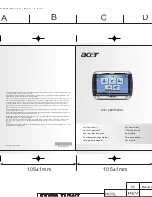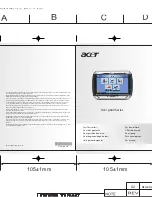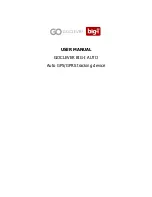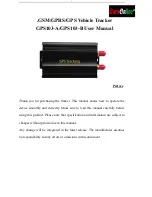
Suspend Mode
A few questions have popped up regarding Suspend mode. There are some automatic
features about it that bear repeating here. Most importantly is the need to unsuspend
during approach inbound from the FAF.
This is a TSO requirement, and we are looking at having this removed in future revisions.
However, for the moment the logic is required. The CNX80 will automatically suspend
waypoint sequencing upon reaching the FAF of any instrument approach. You must
press the SUSP key to unsuspend the CNX80 at the FAF or it will not sequence to the
missed approach upon reaching the missed approach point.
Auto suspend also has caused some confusion. If VTF mode is active SUSP mode will
be on until the airplane is within a 45 degree intercept from the final approach course. At
that point the SUSP annunciator will go out and subsequently come back on at the FAF.
Again, once you check the FAF, unsuspend the CNX80 in preparation for the missed.
What is a Discontinuity?
A discontinuity is a simple device that has existed for years in Flight Management
Systems on air transport aircraft. It has a specific task, mainly to call your attention to a
potential problem in your flight plan that you must rectify. Essentially think of it as a gap
in your flight plan that you must resolve, and the CNX80 is asking for specific navigation
information.
Discontinuities occur for one of two reasons:
1.
The CNX80 is asking for your input to determine how to navigate between the
waypoints adjacent to the discontinuity (deleting a discontinuity equates to flying
direct between those waypoints), or:
2.
There’s a problem you must fix. Example: You’ve selected a STAR or an
approach with transitions that don’t match, i.e. you select a STAR that terminates
at waypoint A and the instrument approach you selected starts at waypoint B.
The CNX80 sees this as a potential problem and inserts a discontinuity flagging
the problem for you to fix. If you made an error in selecting the wrong transition
on the approach, you can reselect the approach and select the correct transition,
which removes the discontinuity, or you may highlight the discontinuity and
delete it if you really want to go from waypoint A direct to waypoint B.
The fundamental design consideration here is that instead of making a potentially
incorrect assumption and stringing waypoints together without any further consideration,
the CNX80 will ask you for resolution to the problem as PIC. Again, if you build your
flight plan without any enroute or procedural errors, most likely you won’t see
discontinuities very often.
























